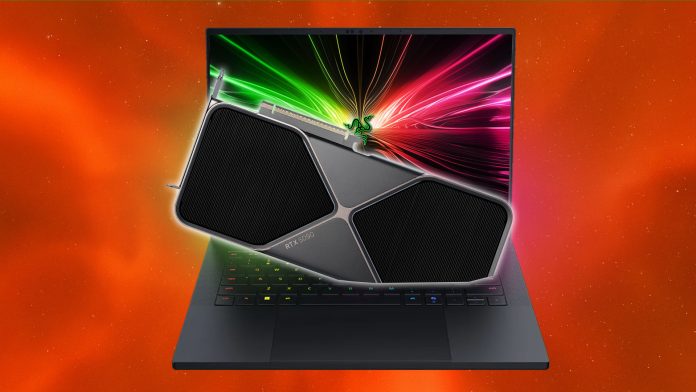As an Amazon Associate, we earn from qualifying purchases and other affiliate schemes. Learn more.

Upgrading the GPU in your gaming laptop is normally not an option, but external graphics card cases allow you to make that change, so long as you have a fast enough Thunderbolt/USB port. The new Razer Core X V2 makes that upgrade easier than ever, though you’ll need to supply the graphics card yourself.
Even the most powerful options in our best gaming laptop guide can’t hold a candle to the performance of a desktop graphics card, thanks to the thermal limits of most laptops, and the fact that Nvidia made its laptop RTX 5090 far less powerful than the desktop version. With external GPU enclosures (eGPUs) such as this new one from Razer, though, you can get close to true desktop gaming performance.
Like the previous Razer Core X, the Razer Core X V2 is effectively just a small PC case that houses only a graphics card and a power supply. Fit your graphics card and PSU of choice – look to our best graphics card and best power supply guides for our recommendations – and you can then plug the Core X V2 into your laptop, via a Thunderbolt 4, Thunderbolt 5, or USB4 port. The card can then be used to accelerate your gaming frame rate either via your laptop’s screen or via monitors connected to the graphics card’s ports.
The exact performance you get will vary depending on the speed of the port you have on your laptop, as well as the speed of your graphics card. Thunderbolt 5 allows for a PCIe x4 (10GB/s) connection between the two systems, which is far lower than the bandwidth available on a typical PCIe x16 (128 GB/s) connection that a graphics card uses to connect to a motherboard.

In previous versions of the Razer Core X that used an even slower Thunderbolt 3 connection, this bandwidth limitation resulted in performance from the external GPU that was noticeably lower than using the same graphics card inside a normal PC. However, the faster speed of a Thunderbolt 5 cable may reduce this throttling effect. Razer hasn’t made any claims one way or the other, though.
As for the design of the eGPU enclosure, it’s a sleek black metal cuboid measuring 197 x 421 x 216mm (W x D x H) with ventilation on the sides, a single 120mm fan inside and, of course, a green glowing Razer logo on the front. It can house a graphics card measuring up to 185.1 x 362.7 x 82mm in size, which means it’s comfortably large enough to accommodate an RTX 5090 Founders Edition, as well as many other larger variants of top-end GPUs.
As well as providing a GPU boost, the Razer Core X V2 can also deliver 140W of charging power to your laptop. Interestingly, the device doesn’t include extra USB ports that you might use for connecting your keyboard and mouse via the Core X V2. You’ll need a conventional USB hub for that.

All this potential for premium portable power doesn’t come cheap, though. With an MSRP of $349.99 / £359.99 / €389.99, you pay quite a bit extra on top of the price of your graphics card, power supply, and, of course, your laptop. However, much like a gaming PC case, this housing can be used to host multiple upgrades. Over the long term, it could provide a saving over simply upgrading your gaming laptop every few years.
The Razer Core X V2 release date is stated on Razer’s website as coming soon, so expect it to be available in the coming weeks.
For more ways to upgrade your gaming laptop, why not check out our guide to buying the best gaming headset, as well as our extensive best gaming mouse buying guide? Both guides include the top choices for all budgets.
Also, if you’ve got any questions about setting up an eGPU or what gaming laptop is right for your needs, you can join our community Discord server to ask us directly. You can also follow us on Google News for daily PC games news, reviews, and guides.
